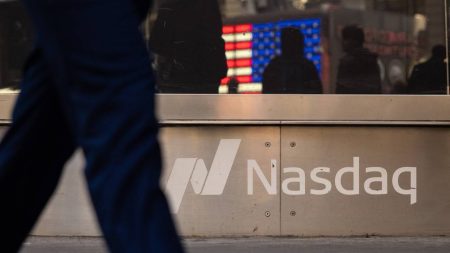Implied volatility is a powerful but often misunderstood metric that plays a major role in options trading. Implied volatility doesn’t tell you what’s going to happen to an option’s price, but it offers insights into what the market thinks might happen. Understanding implied volatility and how it affects options pricing can give you a competitive edge and allow you to make more informed trading decisions.
In this article, we’ll break down the basics of implied volatility, discuss how it impacts options and explore ways you can use it to your advantage.
What is implied volatility?
An option’s implied volatility (IV) gauges the market’s expectation of the underlying stock’s future price swings, but it doesn’t predict the direction of those movements.
If implied volatility is high, the market anticipates larger price swings. If it’s low, the market expects more stability.
Unlike historical volatility, which looks at past price movements, IV is forward-looking — it offers insight into what traders expect future volatility to be.
IV is usually expressed as an annualized percentage, and it’s a key input in options pricing models. It doesn’t predict whether the price will rise or fall, but instead anticipates the magnitude of the move. Many options chains such as those at the best brokers for options trading provide the implied volatility for each contract.
Why is implied volatility important?
Implied volatility is an important factor for options traders because it directly impacts option prices.
- When IV is low, options are cheaper, which can make it a good time to buy options on stocks you believe are poised for significant movement.
- On the other hand, when IV is high, options are more expensive, meaning it might be a good time to sell options if you expect the volatility of the underlying stock to decline.
Some savvy traders even just play the volatility, profiting from the ups and downs of implied volatility itself. They buy options when IV is low, hoping it will rise, and sell them when IV is high, expecting a decline.
By analyzing implied volatility, you can estimate the potential high and low price points for an underlying stock during a specific time, which can make it easier to pick entry and exit points for trades.
Implied volatility also offers insights into market sentiment, so you can gauge whether the market’s expectations align with your own.
How implied volatility works
Implied volatility can change constantly due to shifts in market conditions, supply and demand for the underlying asset and broader economic events that may change investors’ sentiment.
Implied volatility often increases in response to events of uncertainty, such as earnings reports or geopolitical tensions. Once the event passes, volatility typically stabilizes, causing option prices to adjust accordingly.
How implied volatility impacts options pricing
Since options are essentially contracts that give you the right to buy or sell an asset at a specified price, volatility directly impacts the value of those contracts. Higher implied volatility generally means that options premiums increase, while lower IV suggests lower premiums.
To better understand how implied volatility impacts pricing, let’s consider a simple example.
Imagine you’re buying a call option on a stock. The price of this option is influenced by multiple factors, including the stock’s current price, the option’s strike price, time to expiration and implied volatility.
If the market expects a major price movement in the stock, implied volatility will be high. This increased volatility makes the option more valuable since there’s a higher probability of the stock price moving in a direction that benefits the option holder.
Options pricing models
An implied volatility calculation can show you how much price movement you might expect to see until an options contract expires. The most common option pricing model is the Black-Scholes model, though there are others, such as the binomial and Monte Carlo models.
To use these models, traders input information such as the stock price, strike price, time to expiration, interest rate and volatility to calculate an option’s theoretical price. To find implied volatility, traders work backward, using the known market price of an option and solving for the implied volatility of the specific contract. Many options calculators will simply provide the implied volatility for you when you input the stock’s ticker symbol.
Factors influencing implied volatility
Implied volatility can be influenced by several factors, including:
- Supply and demand: When a stock experiences significant fluctuations, either up or down, its volatility increases, and the market’s expectations of future volatility also increase. In contrast, if the stock becomes more stable and shows fewer ups and downs, its volatility declines, and the market’s expectations of future volatility also decrease.
- Events and announcements: Before earnings announcements, implied volatility often rises because investors are uncertain about the immediate future of the stock price.
- Time to expiration: Shorter-term options typically have lower implied volatility because of the limited time frame for price moves. Longer-term options, on the other hand, can exhibit higher implied volatility because there’s more uncertainty about how the price will perform over a longer period.
- Market conditions: Major economic events — such as interest rate changes, unemployment data, market crashes or geopolitical tensions — can impact market volatility and, consequently, implied volatility.
Historical volatility vs. implied volatility
Historical volatility (HV) is a statistical measure of a stock’s price fluctuations over a specific period in the past. It’s calculated using historical price data. While HV measures how much the price of an asset has moved before, implied volatility reflects market expectations of future volatility.
Both metrics offer pricing insights, but in different ways:
- Historical volatility analyzes past price movements to assess future potential.
- Implied volatility incorporates specific factors into a pricing model to project future price behavior.
Traders often use both metrics.
How to use implied volatility to your advantage
Understanding and leveraging implied volatility can give you a strategic advantage. Here are a few ways to make implied volatility work for you.
- Timing trades: When IV is high, option premiums are often inflated. This can be a good opportunity to sell options, especially if you expect volatility to drop after a specific event. When IV is low, buying options might be more cost-effective because they’re usually cheaper.
- Calculating fair value: By comparing implied volatility with historical volatility, you can determine whether an option is fairly priced. If IV is significantly higher than HV, it may suggest that an option is overvalued, and vice versa.
- Managing risk: For risk management, implied volatility provides a gauge of market sentiment. High IV may equal more uncertainty and potential risk. So conservative investors might want to avoid options with very high implied volatility or use it to set stop-loss orders and hedge positions.
Bottom line
Implied volatility is an essential concept for options traders. It provides insight into market expectations and helps traders gauge risk and opportunity. While it doesn’t predict price direction, it offers a window into the market’s consensus on how much prices might move in the future.
By understanding how implied volatility works and how it impacts option prices, you can make more informed decisions and potentially improve your trading results. Just remember that implied volatility is only one of many factors to consider when trading options.
Read the full article here










